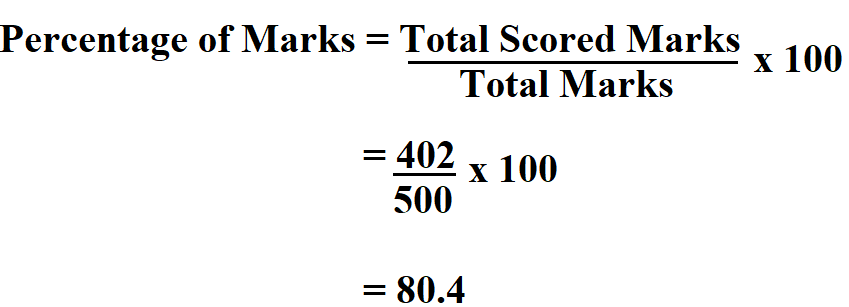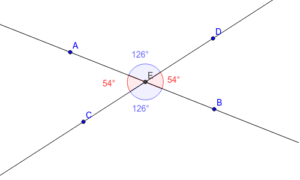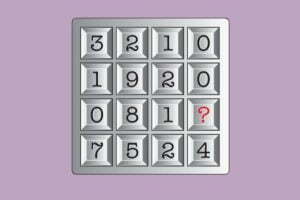We don’t use mathematical terms and calculations only in school. In fact, most of them are quite essential to daily life. “Percentages” are one such mathematical term that we use everywhere, from the calculation of marks to the measurement of ingredients while cooking and the calculation of discounts while shopping.

In this article, let’s look at what “percentage” means and how to calculate it.
What is a Percentage?
The word “percentage” was derived from the Latin word “per centum,” which means “by the hundredth.” In short, percentages are fractions with a denominator of 100. “%” symbol denotes a percentage.
Examples of Percentage
- Andy received a 50 per cent on his math test, which means he received 50 points out of a possible 100. In fraction form, it’s 50/100, while in terms of ratio, it’s 50:100.
- 3 is what per cent of 12? 3 is 25 per cent of 12.
Calculation of Percentage

Calculating a percentage means determining a portion of a whole in terms of 100.
A percentage can be calculated in two ways:
- For these cases, we employ the unitary method.
- Second, by changing the denominator of the fraction to 100.
It should be noted that the second method of percentage calculation is not used when the denominator is not a factor of 100. For such cases, we use the unitary method.
How to Obtain a Percentage?
Let’s find out how to calculate percentages using the two methods mentioned above.
If two or more numbers sum up to 100, the percentage of those individual values to the total value equals that number. For example, Sam purchased balls in three different hues. The following table lists the specifics of the purchase.
| Colour | Number of balls | Fraction | Written as |
| Yellow | 35 | 35/100 | 35% |
| Green | 23 | 23/100 | 23% |
| Red | 42 | 42/100 | 42% |
Since the total number of balls add up to 100, the percentages can be calculated easily.
What happens if the total number of things doesn’t equal 100? We transform the fractions to equivalent fractions with a denominator of 100 in such circumstances. For example, Iris wears a bracelet with 24 beads in two different colours: black and white. Take a look at the table below, which displays the percentage of black and white beads out of a total of 25 beads.
| Colour | Black | White |
| Number of Beads | 10 | 15 |
| Fraction | 10/25 | 15/25 |
| In percentage | 40% | 60% |
Formula to Calculate Percentage
You can easily represent any number as a fraction of 100 using this formula. In fact, if you look closely, you will notice that the two methods for calculating percentages indicated above can be readily calculated using the formula below:
Percentage= (Value/Total Value)×100
Let us see how to use this percentage formula in the examples given below.
How to Calculate the Percentage of a Number?
For example: What is 15% of 200?
- Using the percentage formula, convert the problem to an equation, which is P% * A = B
- P is 15%, A is 200, so the equation is 15% * 200 = B
- Convert 15% to a decimal by removing the per cent sign and dividing by 100. Therefore, 15/100 = 0.15
- Substitute 0.15 for 15% in the equation: 15% * 200 = B, which becomes 0.15 * 200 = B
- Do the math
- B = 30
- So 15% of 200 is 30
How to Find Out What Percentage of A is B.
For example: What per cent of 180 is 25?
- Using the percentage formula, convert the problem to an equation: P per cent Equals B/A per cent
- The equation is 25/80 = P per cent.
- Calculate the following: 25/100=0.3125
- The result is in decimal form, not percentage form. To calculate the percentage, multiply the value by 100.
- Converting 0.3125 to a per cent, we get 31.25%
- So 31.21% of 80 is 25.
How do You Find A if P% of it is B?
For example: 12 is 20% of which number?
- Convert the problem to an equation using the percentage formula: B/P% = A
- B is 12, P% is 20, so the equation is 12/20% = A
- Convert the percentage into a decimal form by dividing it by 100.
- Substitute 0.20 for 20% in the equation: 12/0.20 = X
- Do the math
- X = 60
- So 12 is 20% of 60
Percentage Difference Between Two Numbers
The percentage difference is the change in a quantity’s value over time expressed as a percentage. In other words, sometimes we need to know how much something has increased or decreased in percentages, which is referred to as Percentage Change. For instance, a rise in population, a reduction in poverty, and so on.
When computing percentage differences, there are two scenarios that may occur, a percentage rise and a percentage reduction.
How to Calculate Percentage Increase?
Percentage increase refers to the percentage change when a value increases over time. For example, a growth in population, an increase in the number of microbes on a surface, and so on. The following formula can be used to compute the percentage increase:
Percentage Increase or Percentage Rise = (The Increased Value – The Original value)/The Original value * 100
How to Calculate Percentage Decrease?
As a value is decreased over time, the percentage decline refers to the per cent change in the value. For example, a drop in rainfall over a region, a drop in the number of Covid patients, and so on. The following formula can be used to compute the percentage decrease:
Percentage Decrease or Percentage Decline= (The Original value – The Decreased Value)/ The Original Value * 100
Points to Remember
- When calculating the percentage of a whole, first compute the value of 1% and then multiply it by the per cent you need to find.
- A rise or fall in any quantity can be represented as a percentage.
- Percentages can be converted into fractions and vice-versa.
- Percentages are reversible. For example, 12% of 80 is the same as 80% of 12.
How to Determine the Percentage of Marks

The majority of students are asked how to determine the percentage of marks earned on tests. The percentage of marks is calculated in two simple stages. They are as follows:
Step 1: Multiply the received marks by the test’s maximum score.
Step 2: Take the result and multiply it by 100.
You now have the percentage of marks for that subject.
Final Thoughts
Percentages are easy to calculate once you understand the concept and the formula. We hope that this article provides a basic understanding of what a percentage is and can help any student tackle any numerical from this topic.
Share with your friends





